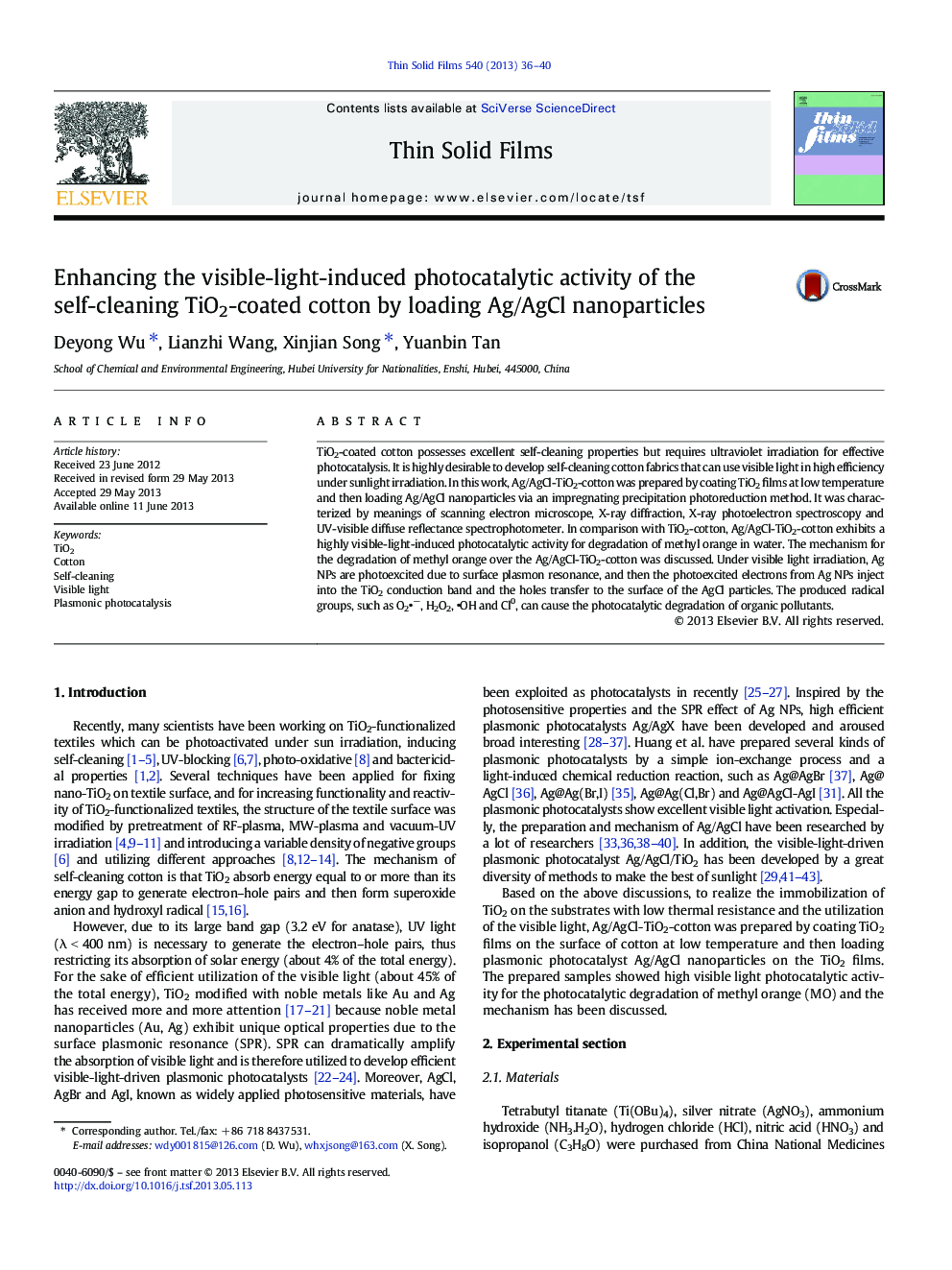| Article ID | Journal | Published Year | Pages | File Type |
|---|---|---|---|---|
| 1666048 | Thin Solid Films | 2013 | 5 Pages |
•TiO2 was coated on the substrates with low thermal resistance.•Ag/AgCl-TiO2-cotton shows visible-light-induced self-cleaning property.•Silver nanoparticles lead to surface plasmon resonance absorption.
TiO2-coated cotton possesses excellent self-cleaning properties but requires ultraviolet irradiation for effective photocatalysis. It is highly desirable to develop self-cleaning cotton fabrics that can use visible light in high efficiency under sunlight irradiation. In this work, Ag/AgCl-TiO2-cotton was prepared by coating TiO2 films at low temperature and then loading Ag/AgCl nanoparticles via an impregnating precipitation photoreduction method. It was characterized by meanings of scanning electron microscope, X-ray diffraction, X-ray photoelectron spectroscopy and UV-visible diffuse reflectance spectrophotometer. In comparison with TiO2-cotton, Ag/AgCl-TiO2-cotton exhibits a highly visible-light-induced photocatalytic activity for degradation of methyl orange in water. The mechanism for the degradation of methyl orange over the Ag/AgCl-TiO2-cotton was discussed. Under visible light irradiation, Ag NPs are photoexcited due to surface plasmon resonance, and then the photoexcited electrons from Ag NPs inject into the TiO2 conduction band and the holes transfer to the surface of the AgCl particles. The produced radical groups, such as O2•−, H2O2, •OH and Cl0, can cause the photocatalytic degradation of organic pollutants.
